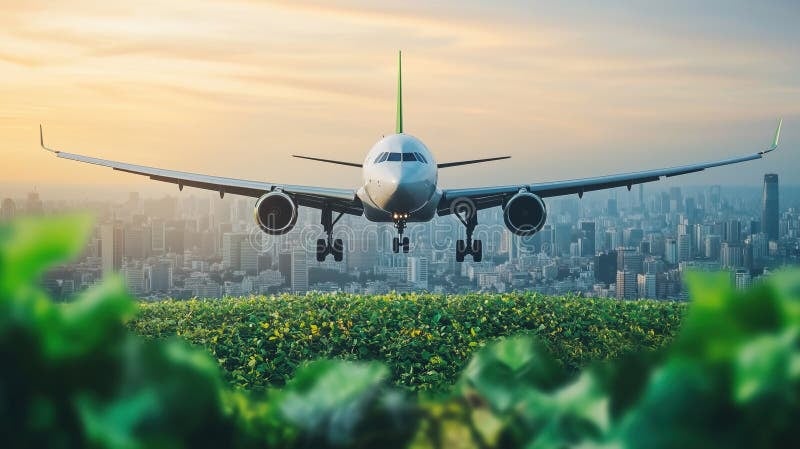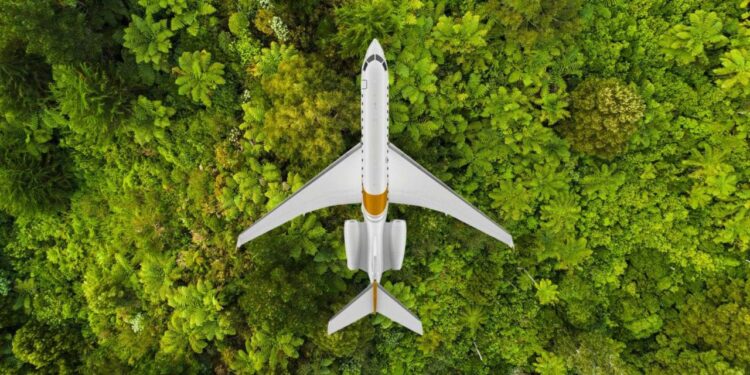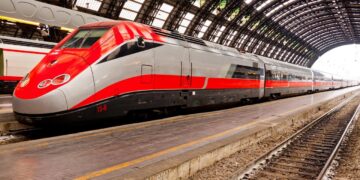The aviation industry, a cornerstone of global commerce and travel, is at a critical juncture. Faced with the undeniable imperative to decarbonize, the sector is embarking on a profound transformation. Sustainable Aviation is no longer a distant aspiration; it is a current reality, propelled by a powerful convergence of technological breakthroughs, strategic investments, and regulatory pressures. This transition is not about incremental improvements but about a fundamental shift in how we power, build, and operate aircraft. Understanding the diverse pathways to a more sustainable future—from next-generation fuels to electric flight—is crucial for travelers, industry leaders, and anyone invested in the long-term health of our planet and the future of air travel.
The Decarbonization Imperative

For decades, the aviation industry has been one of the fastest-growing sources of greenhouse gas (GHG) emissions. While a vital part of the global economy, its reliance on fossil fuels has made it a significant contributor to climate change. Addressing this challenge is the primary driver of sustainable aviation.
A. The Challenge of Emissions
The nature of air travel presents unique and complex hurdles to decarbonization.
- Fossil Fuel Dependence: Commercial aircraft have historically relied almost exclusively on jet fuel, a petroleum-based product. Its high energy density—the amount of energy stored per unit of weight—is unparalleled, making it ideal for powering long-haul flights.
- Non-CO2 Effects: Beyond carbon dioxide (CO2), aviation also contributes to climate change through non-CO2 effects, such as nitrogen oxides (NOx) and contrails. These have a significant warming effect, adding to the total climate impact of a flight.
- A Growing Global Footprint: Global air travel is projected to continue its growth trajectory, particularly in developing economies. Without a fundamental shift in technology and fuel sources, the industry’s carbon footprint would continue to grow, making climate goals unattainable.
- The High Cost of Innovation: Developing and implementing new, sustainable technologies for aviation is incredibly expensive, requiring massive investments in research and development, manufacturing, and new infrastructure.
B. The Pervasive Role of Aviation in the Global Economy
Despite its climate challenges, aviation’s role in the global economy cannot be overstated. It is a critical link for:
- Global Commerce: Air cargo transports a significant portion of the world’s goods by value, from high-tech electronics and pharmaceuticals to fresh produce and e-commerce packages.
- International Travel: It connects people, cultures, and nations, facilitating tourism, business travel, and personal connections on a global scale.
- Economic Development: Aviation supports millions of jobs worldwide, from manufacturing and airport operations to hospitality and tourism. Its health is directly linked to the health of the global economy.
- Humanitarian Aid: Air transport is vital for delivering aid, supplies, and medical assistance during humanitarian crises.
The Pillars of Sustainable Aviation
There is no single “magic bullet” for decarbonizing aviation. Instead, the industry is pursuing a multi-pronged, simultaneous strategy that addresses emissions from all angles. This approach involves a combination of new fuels, advanced aircraft technology, and operational efficiency improvements.
A. Sustainable Aviation Fuels (SAFs)
SAFs are arguably the most promising and immediate solution for reducing aviation’s carbon footprint. They are a drop-in replacement for conventional jet fuel, meaning they can be used in existing aircraft without engine modifications.
- What are SAFs? SAFs are a category of non-petroleum-based fuels that offer a significant reduction in lifecycle GHG emissions. They are produced from various sustainable feedstocks, including:A. Waste Oils and Fats: Used cooking oil, animal fats, and grease.B. Agricultural and Forestry Residues: Crop residues, wood waste, and forestry byproducts.
C. Algae: Cultivated microalgae that can be processed into fuel.
D. Power-to-Liquids (PtL): A nascent technology that uses renewable electricity to synthesize liquid fuels from captured CO2 and water. This holds the promise of truly “e-fuels” with near-zero lifecycle emissions.
- The Benefits of SAFs:A. Significant Emission Reduction: SAFs can reduce lifecycle GHG emissions by up to 80% or more compared to conventional jet fuel.B. No Engine Modifications: They are “drop-in” fuels, meaning they can be blended with conventional jet fuel and used in existing aircraft and airport infrastructure.
C. Reduced Non-CO2 Emissions: The cleaner-burning nature of SAFs can also reduce non-CO2 emissions, such as sulfur and particulates.
- The Challenges of SAFs:A. High Cost: The production of SAFs is currently more expensive than conventional jet fuel, which is a major barrier to widespread adoption.B. Limited Supply: The global production of SAFs is still in its infancy, and the supply is a fraction of the total demand for jet fuel. Scaling up production is a major challenge.
C. Feedstock Scarcity: Securing a sustainable, large-scale supply of feedstocks without impacting food production or land use is a significant hurdle.
B. Advanced Aircraft Technology
While SAFs address the fuel, advanced aircraft technology is focused on improving the efficiency of the aircraft itself and exploring new propulsion systems.
- More Fuel-Efficient Engines: Engine manufacturers are continuously developing more fuel-efficient engines with improved aerodynamics and lighter materials, which reduce fuel consumption and emissions.
- Aerodynamic Improvements: New aircraft designs with improved wing shapes, lighter composite materials, and a more streamlined body can significantly reduce drag and improve fuel efficiency.
- Electric and Hybrid-Electric Aircraft: For short-haul flights, electric and hybrid-electric aircraft are a promising solution.A. Battery Technology: The challenge lies in the energy density of batteries. While they are a great power source, batteries are much heavier than jet fuel for the same amount of energy, making them unsuitable for long-haul flights with current technology.B. Hybrid-Electric Systems: Hybrid-electric systems, which combine jet engines with electric motors, are a more near-term solution for short-haul flights, offering a significant reduction in emissions.
- Hydrogen-Powered Aircraft: Hydrogen is another promising zero-emission fuel source.A. Green Hydrogen: Hydrogen can be produced using renewable energy, which makes it a truly zero-emission fuel.B. Challenges: The technology is still in its early stages of development. Storing hydrogen in aircraft requires new, bulky, and heavy fuel tanks, and the infrastructure for producing and distributing green hydrogen is not yet in place.
- Propeller and Open-Rotor Designs: For slower-speed, shorter-haul flights, advanced propeller and open-rotor designs can offer a significant improvement in fuel efficiency and a reduction in noise.
C. Operational and Infrastructure Efficiency
Beyond the aircraft, the industry is also focused on making flight operations more efficient and reducing waste.
- Optimized Flight Paths: Using advanced software and air traffic control systems to optimize flight paths, reducing time in the air, fuel consumption, and non-CO2 emissions.
- Single-Engine Taxiing: Using only one engine to taxi on the ground to reduce fuel consumption.
- Sustainable Airport Operations: Airports are also playing a key role, investing in renewable energy, electrified ground support equipment, and improved waste management systems.
- Weight Reduction: Reducing the weight of aircraft, from lighter seats and galleys to digital documentation, can have a significant impact on fuel consumption.
- Continuous Descent Approaches (CDAs): Implementing CDAs, which allow aircraft to descend from cruising altitude to the runway with minimal engine thrust, significantly reduces fuel burn and noise.
The Strategic Battleground for the Transition

The shift to sustainable aviation is a global endeavor that requires a collaborative effort from governments, the private sector, and international organizations.
A. The Role of Governments and Regulation
Governments are playing a critical role in setting targets, creating incentives, and enforcing regulations.
- Emission Targets: Setting ambitious emission reduction targets, such as net-zero by 2050, to provide a clear roadmap for the industry.
- Incentives and Subsidies: Providing subsidies, tax breaks, and other financial incentives to encourage the production and use of SAFs.
- Regulatory Mandates: Implementing mandates, such as the blending of a certain percentage of SAFs with conventional jet fuel, to create a consistent demand signal for the SAF industry.
- International Agreements: Working with international organizations, such as the International Civil Aviation Organization (ICAO), to create a global framework for sustainable aviation.
B. The Role of the Private Sector
Airlines, engine manufacturers, and fuel producers are making massive investments in this transition.
- Airlines as Early Adopters: Many airlines are making commitments to use a certain percentage of SAFs and are investing in more fuel-efficient aircraft. They are also partnering with SAF producers to secure a long-term supply.
- Engine and Aircraft Manufacturers: Companies like Airbus, Boeing, Rolls-Royce, and GE are investing billions in new engine designs, aircraft technologies, and the research of hydrogen and electric propulsion systems.
- Fuel Producers: Major energy companies and startups are investing in new facilities and technologies to produce SAFs at a large scale.
C. The Role of the Consumer
Travelers are also playing a role, demanding more sustainable options and making choices based on the environmental impact of their travel.
- Carbon Offsetting: Many airlines are offering travelers the option to purchase carbon offsets to mitigate the environmental impact of their flight.
- Choosing Sustainable Airlines: A growing number of travelers are choosing airlines that have made a public commitment to sustainability and are using SAFs.
- Demanding Transparency: Travelers are demanding greater transparency from airlines about their environmental impact and their plans for decarbonization.
The Future of Aviation
The transition to a sustainable aviation industry is one of the greatest engineering and economic challenges of our time. But the path forward is clear. It will be a journey defined by a powerful convergence of innovation, collaboration, and a shared commitment to a more sustainable future.
A. SAFs and Operational Efficiency
In the near term, the focus will be on scaling up the production of SAFs and implementing operational efficiencies. SAFs will become a standard part of the fuel mix, and airlines will be forced to become more efficient in their operations.
B. Hybrid and Electric Flight
In the mid-term, electric and hybrid-electric aircraft will become a reality for short-haul flights, revolutionizing regional travel and opening up new opportunities for sustainable air mobility.
C. Hydrogen and Next-Gen Aircraft
In the long term, hydrogen-powered aircraft will take flight, offering a truly zero-emission solution for long-haul travel. New aircraft designs and propulsion systems will completely reshape the aviation industry, making it a sustainable and essential part of the global economy for centuries to come.
Conclusion
The aviation industry’s commitment to decarbonization is a powerful testament to its resilience and its capacity for innovation. The journey of Sustainable Aviation Takes Flight, and it is a path that will be defined by a multi-pronged strategy encompassing sustainable fuels, advanced aircraft technology, and operational efficiency. This is a global endeavor that requires a collaborative effort from governments, the private sector, and consumers.
While the challenges are immense, from the high cost of new technologies to the need for a global supply of sustainable fuels, the path forward is clear. The future of aviation is a story of adaptation and transformation, where the industry will continue to connect the world, but with a profoundly smaller environmental footprint. The legacy of this transformation will not just be in the planes that fly, but in the cleaner, greener skies they fly through.










